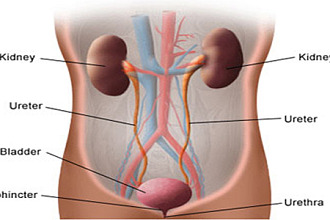Smog's Contribution to Illness
You feel like someone's choking you! Your chest feels tight -- you may cough or wheeze -- and you just can't seem to catch your breath! You feel panicky! What do you do?
You run for the freshest most oxygenated air around. Perhaps you grab an inhaler, maybe even take a whiff from an oxygen bottle, and you hope for miraculous relief. This scenario is not uncommon. About 20 million Americans suffer from asthma. In severe cases, asthma attacks can be deadly. Asthma attacks kill 5,000 people every year in the United States! Ask anyone with this condition how important air is. The culprit? Air pollution from cars, factories, and power plants. More than 159 million Americans -- over half the nation's population -- live in areas with bad air.
A research study published in 2002 estimated that 30 percent of childhood asthma is due to environmental exposures, costing the nation $2 billion per year. And studies also suggest that air pollution may contribute to the development of asthma in previously healthy people. For children with asthma, hospitalizations occur up to 26 percent more frequent on high air pollution days compared to normal days. Air pollution has also been implicated in causing pneumonia, heart attacks, heart arrhythmias, cancer, and other diseases. So my advice is to move out of the cities and enjoy the air the way God created it -- fresh, crisp, clean, and with the scent of evergreen trees and flowers. Trees, water, and wind help keep air fresh.
Indoor Air Pollution
The yellow-brown pall of smog hanging over a city is not the only breathing threat to humanity. Consider indoor air pollution, which can be a source of colds, flu, sore throats, headaches, asthma, and other respiratory problems. Formaldehyde is found in building materials, smoking, household products, and the use of gas stoves or kerosene space heaters. Formaldehyde may be used to add permanent-press qualities to clothing and draperies, as a component of glues and adhesives, as a preservative in some paints and coating products, and in pressed wood products like particleboard. While we may not get rid of it, it is important to open windows and keep the air circulating to cut down on high concentrations. Some people may find great relief in removing products with chemical adhesives. Other indoor pollutants include: pesticides, paints, varnishes, hobby products, tobacco smoke, and cleaning products, bacteria, mold, mildew, viruses, animal dander, dust mites, cockroaches, and pollen.
Fresh Air's Importance to the Sick
An incredible story! During the 1919 flu epidemic, the hospital in Eureka, California, was overflowing with patients. The head doctor called the army, which gave them tents, cots, and blankets. The overflow patients were moved into the tents in which there was no heat, except hot water bottles that were used to keep the feet warm. It was found that no patients in the tents, with the fresh air they were getting, were dying. However, numbers of patients in the hospital were dying. When this was realized, the heat in the hospital was turned down and the windows were raised. The patients had to put on heavy underwear, but their death rate went down (Gunter B. Paulien PhD. The Divine Philosophy and Science of Health and Healing, p. 88).


























